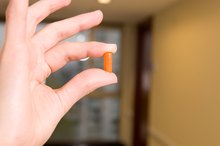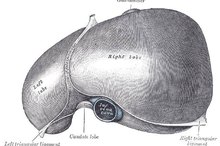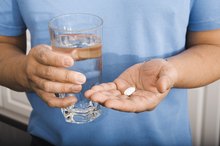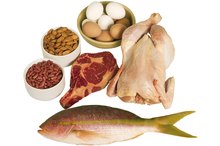What does fact checked mean?
At Healthfully, we strive to deliver objective content that is accurate and up-to-date. Our team periodically reviews articles in order to ensure content quality. The sources cited below consist of evidence from peer-reviewed journals, prominent medical organizations, academic associations, and government data.
- Medline Plus: Vitamin B-12 Level
- National Institutes of Health Office of Dietary Supplements: Vitamin B-12
The information contained on this site is for informational purposes only, and should not be used as a substitute for the advice of a professional health care provider. Please check with the appropriate physician regarding health questions and concerns. Although we strive to deliver accurate and up-to-date information, no guarantee to that effect is made.
What Is a Normal B12 Count?
Vitamin B-12, a nutrient found in animal products such as meat, seafood, poultry, eggs and dairy, plays a crucial role in metabolism, DNA synthesis and neurological function. Inadequate intake or absorption of vitamin B-12 can cause vitamin B-12 deficiency. If you have signs of this deficiency, you may need a blood test to determine B-12 levels in your blood.
Test
Doctors typically draw blood to test vitamin B-12 levels. Patients should not eat or drink for about six to eight hours before the test, according to Medline Plus, a National Institutes of Health online medical encyclopedia. Certain medications may affect the test results, so discuss all medications you are taking with your doctor.
Normal B-12 Levels
Signs & Symptoms of Vitamin B-12 & Vitamin D Deficiencies
Learn More
Doctors in the United States measure vitamin B-12 levels in picograms per milliliter, or pg/ml. Normal B-12 levels typically fall between 200 and 900 pg/ml, according to Medline Plus 1. Normal values may vary depending on the laboratory, however, so discuss your test results with your doctor.
Low Levels
Vitamin B-12 levels below 250 pg/ml may indicate a B-12 deficiency in adults, according to the National Institutes of Health Office of Dietary Supplements 2. Values below 170 pg/ml indicate a deficiency in most people, and values between 200 and 500 pg/ml may indicate a deficiency in older adults. Because excess vitamin B-12 leaves the body in urine, high levels of B-12 are rare, according to Medline Plus 1.
B-12 Deficiency Symptoms
What Is MCHC in a Blood Test?
Learn More
Common symptoms of vitamin B-12 deficiency include:
- fatigue
- weakness
- shortness of breath
- dizziness
- difficulty concentrating
- loss of appetite
- weight loss
- pale skin
- sore or inflamed tongue
Prolonged vitamin B-12 deficiency may cause serious neurological symptoms, such as
- confusion
- memory loss
- difficulty maintaining balance
- depression
- dementia
Related Articles
References
- Medline Plus: Vitamin B-12 Level
- National Institutes of Health Office of Dietary Supplements: Vitamin B-12
- Institute of Medicine (US) Committee to Review Dietary Reference Intakes for Vitamin D and Calcium; Ross AC, Taylor CL, Yaktine AL, et al., editors. Dietary Reference Intakes for Calcium and Vitamin D. Washington (DC): National Academies Press (US); 2011. 3, Overview of Vitamin D.
- Roy S, Sherman A, Monari-Sparks MJ, Schweiker O, Hunter K. Correction of low vitamin D improves fatigue: Effect of correction of low Vitamin D in fatigue study (EViDiF study). N Am J Med Sci. 2014 Aug;6(8):396-402. doi: 10.4103/1947-2714.139291
- Wong SK, Chin KY, Ima-Nirwana S. Vitamin D and Depression: The evidence from an indirect clue to treatment strategy. Curr Drug Targets. 2018;19(8):888-97. doi: 10.2174/1389450118666170913161030
- Nair R, Maseeh A. Vitamin D: The "sunshine" vitamin. J Pharmacol Pharmacother. 2012;3(2):118-26. doi:10.4103/0976-500X.95506
- Meena N, Singh Chawla SP, Garg R, Batta A, Kaur S. Assessment of vitamin D in rheumatoid arthritis and its correlation with disease activity. J Nat Sci Biol Med. 2018;9(1):54-58. doi:10.4103/jnsbm.JNSBM_128_17
- Fares A. Winter cardiovascular diseases phenomenon. N Am J Med Sci. 2013;5(4):266-79. doi:10.4103/1947-2714.110430
- Porojnicu AC, Dahlback A, Moan J. Sun exposure and cancer survival in Norway: changes in the risk of death with season of diagnosis and latitude. Adv Exp Med Biol. 2008;624:43-54. doi: 10.1007/978-0-387-77574-6_4
- Holick MF et al. Evaluation, treatment, and prevention of vitamin D deficiency: an Endocrine Society clinical practice guideline. J Clin Endocrinol Metab. 2011 Jul;96(7):1911-30. doi: 10.1210/jc.2011-0385
- Ross AC et al. The 2011 report on dietary reference intakes for calcium and vitamin D from the Institute of Medicine: what clinicians need to know. J Clin Endocrinol Metab. 2011 Jan;96(1):53-8.
- Pilz et al. Vitamin D testing and treatment: a narrative review of current evidence. Endocr Connect. 2019 Feb 1;8(2):R27-R43. doi: 10.1530/EC-18-0432
- National Institutes of Health Offices of Dietary Supplements. Vitamin D fact sheet. Updated August 7, 2019.
Writer Bio
Lisa Porter began writing professionally in 2009. She writes for various websites and has a Bachelor of Arts in English literature.









